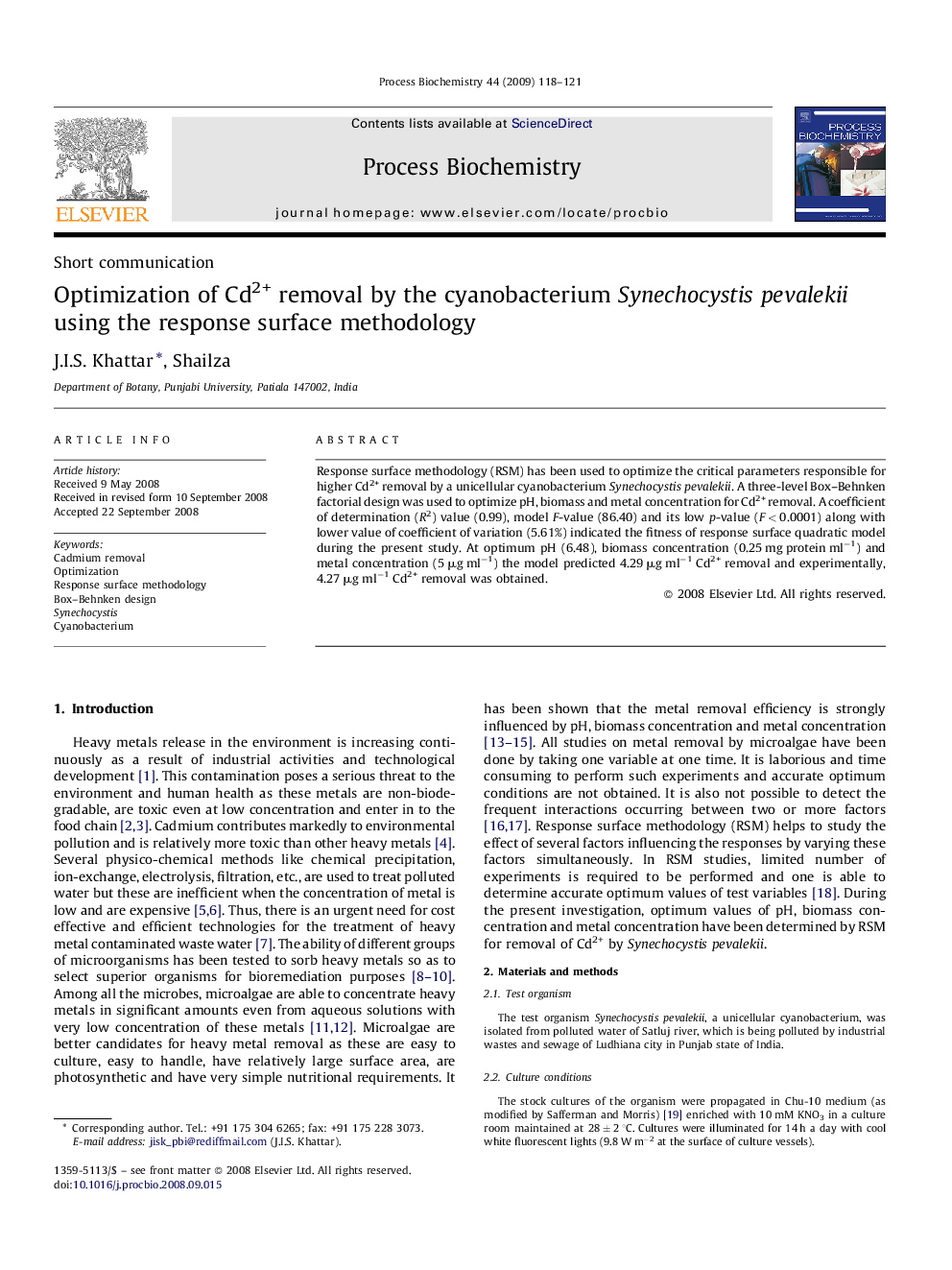| Article ID | Journal | Published Year | Pages | File Type |
|---|---|---|---|---|
| 35659 | Process Biochemistry | 2009 | 4 Pages |
Response surface methodology (RSM) has been used to optimize the critical parameters responsible for higher Cd2+ removal by a unicellular cyanobacterium Synechocystis pevalekii. A three-level Box–Behnken factorial design was used to optimize pH, biomass and metal concentration for Cd2+ removal. A coefficient of determination (R2) value (0.99), model F-value (86.40) and its low p-value (F < 0.0001) along with lower value of coefficient of variation (5.61%) indicated the fitness of response surface quadratic model during the present study. At optimum pH (6.48), biomass concentration (0.25 mg protein ml−1) and metal concentration (5 μg ml−1) the model predicted 4.29 μg ml−1 Cd2+ removal and experimentally, 4.27 μg ml−1 Cd2+ removal was obtained.
